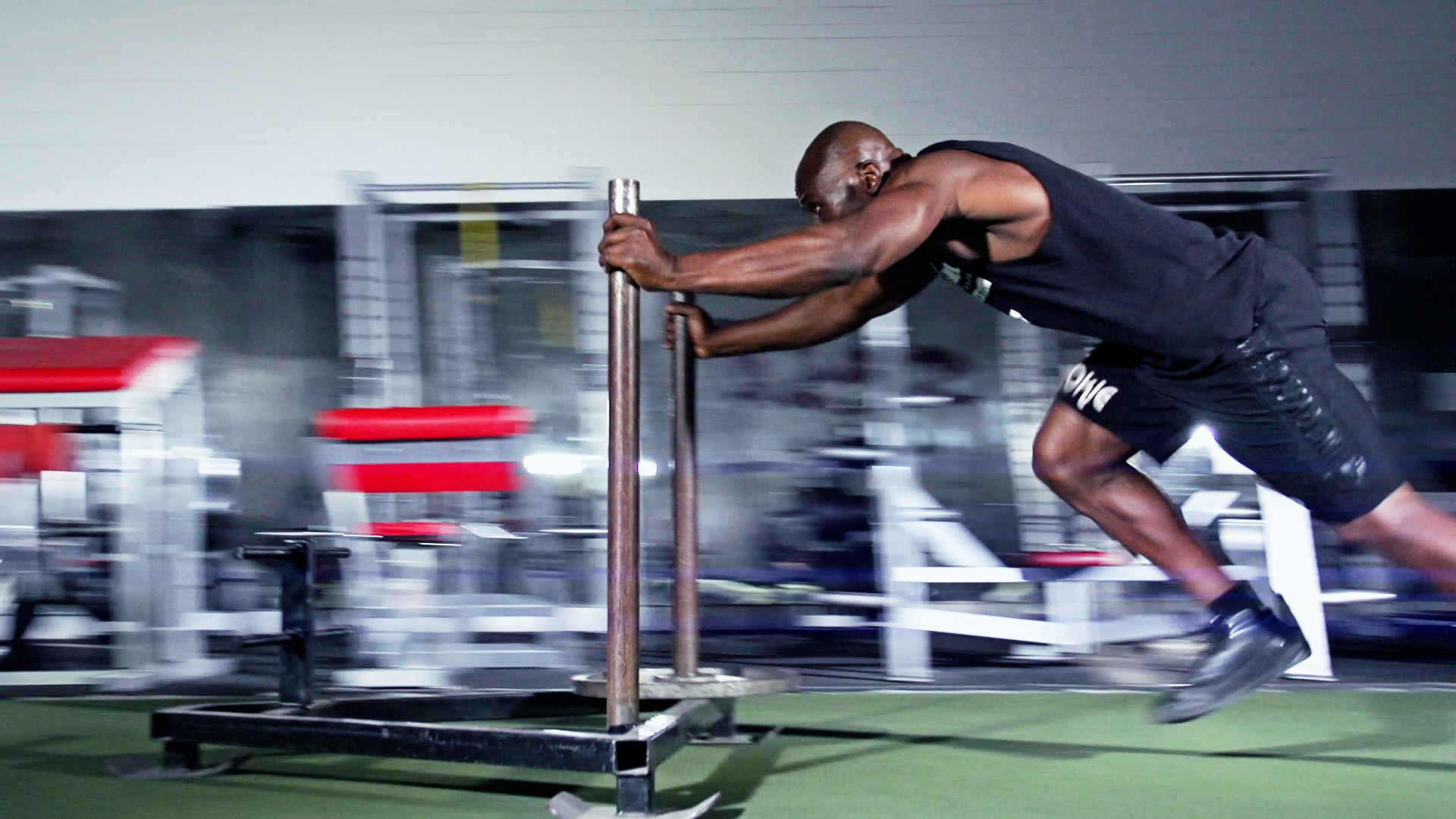 Having a plan is one of the most important aspects of training. Whether you are trying to lose weight, build more muscle, or improve performance, a plan is usually the difference between seeing impressive results or just standing still. This is one of the main responsibilities a coach will help you with. They examine your current situation, learn where you want to get to, and create the plan that gets you there.
Having a plan is one of the most important aspects of training. Whether you are trying to lose weight, build more muscle, or improve performance, a plan is usually the difference between seeing impressive results or just standing still. This is one of the main responsibilities a coach will help you with. They examine your current situation, learn where you want to get to, and create the plan that gets you there.
On a recent podcast episode, I talked about periodization and how you can implement it in your training. Periodization is a technical term for a plan, in the training world. There are many different types of training plans you can follow to get the results you are looking for. Sometimes it comes down to personal preference or it may depend on where you are starting from.
After I released the periodization podcast, I received a few questions from our listeners. Periodization can get very complicated, so I am writing this article to help you get started on a solid plan. To help simplify it, I am going to break this down into 3 categories. The first is more traditional periodization. If you are a beginner or have been out of training for a while, you can follow the second method. For those that have been training consistently for 6 months or more, you can move onto the third method.
Periodization Method #1
I am gong to spend the least amount of time with this first method because it is usually the easiest to grasp and the most commonly seen. This would be linear periodization. This type of program works very well and has been around for decades.
With this plan you will progress linearly, obviously, meaning each phase of your training will progressively get more intense. The different intensities are usually categorized as endurance, hypertrophy (or muscle building), Strength, and Power. This can be changed based on your ultimate goal, but usually what we see is going from lowest intensity to highest.
So for your first month or so of training, you focus all of your workouts improving endurance. Then, the next month you shift to muscle building, and so on. 
This type of training is great for certain athletes, but has its drawbacks. For example, what if power is not your ultimate goal? Then this method can thrown off a bit. Also, while you see great improvements when you put all your energy in one area, you actually can get weaker in other areas. For example when you are in the last phase of power, your strength and power are getting better, but you are probably losing some endurance.
So while linear periodization still works well, for Spartan races I think there are better options out there.
Periodization Method #2
Being a beginner has its benefits. One being, just about any type of program you follow will lead to significant results. Even just random workouts will give you some progress, but I wouldn’t recommend it. You want to set yourself up for success down the road, so starting on the right path is a big first step.
This method we are about to discuss is also good, if performance is not necessarily your main goal. Maybe you are just looking for overall health improvement, or weight loss first, and then performance second. It could be a good place to start if you are getting over an injury and need to start back into a program.
This method has been referred to as hybrid training or daily undulating periodization. As mentioned earlier, when you are first getting started or at least it is has been a while since you have trained, you will see vast improvements. You will often see simultaneous gains as well. What I mean by this is, you will see significant improvements in strength, power, endurance, and muscle growth all at the same time. This becomes more challenging the longer you have trained.
So for this model you will train different aspects of fitness all in a given workout. To make this an easy example we will focus on power, strength, and endurance. There are many other areas we can train but these are the big three we can focus on. So every day that you train, you will perform different exercises that focus on these goals. Again to make it an easy example we will mainly focus on sets and reps to hit each goal.
Probably the easiest way to illustrate this model is with an sample week. I will do my best to keep it simple. Let us say that you plan on exercising 3 days per week (Mon., Wed., Fri.). Each workout you will include a few exercises that are designed to improve power, a few that improve strength, and a few that improve endurance. We day doesn’t have to be the same exact routine, but it will follow a similar protocol. It might look something like this:
Monday
Power Development – Box Jumps superset with MB Slams 3 sets of 6 reps. Rest 60 seconds between each.
Strength Development – Barbell Deadlifts superset with Chin Ups 4 sets of 8 reps. Rest 90 seconds between each.
Endurance Develoment – Walking Lunges superset with Push Ups 3 sets of 20 reps. Rest 30 seconds between each.
Wednesday
Power Development – Broad Jumps superset with MB Rotational Throws 3 sets of 6 reps. Rest 60 seconds between each.
Strength Development – KB Goblet Squats superset with DB Bench Press 4 sets of 8 reps. Rest 90 seconds between each.
Endurance Develoment – KB Swings superset with Inverted Rows 3 sets of 20 reps. Rest 30 seconds between each.
Friday
Power Development – MB Underhand Scoop Throws superset with MB Chest Throws 3 sets of 6 reps. Rest 60 seconds between each.
Strength Development – KB Split Squats superset with DB Overhead Press 4 sets of 8 reps. Rest 90 seconds between each.
Endurance Develoment – Step Ups superset with Single Arm DB Rows 3 sets of 20 reps. Rest 30 seconds between each.
There idea behind this plan is that each day you will spend a certain amount of time focusing on a goal, but not focusing the entire workout on that goal. This will give you exposure to a variety of different skills that you need to work on to improve your performance, and you will see gains in each category.
You would stick with these 3 workouts for the next 4-6 weeks then progress to a more challenge phase with different exercise progressions. This plan would work well for 3-6 months of training for a beginner or someone getting back into training.
Periodization Method #3
The final program type is another undulating or nonlinear plan. In our last example of this we were training multiple aspects of conditioning all at once. While this is great for beginners, it may actually prevent improvements on those that have been training a while.
Trying to get everything at once, w hile good for beginners, causes problems in experience athletes. These different goals respond to different types of training. Some of that training might be conflicting and prevent results from occurring. When you are starting at zero, you body is making general adaptations and you see general improvement everyone. But once you have tapped this out, you need more specific training to lead to more specific adaptations.
hile good for beginners, causes problems in experience athletes. These different goals respond to different types of training. Some of that training might be conflicting and prevent results from occurring. When you are starting at zero, you body is making general adaptations and you see general improvement everyone. But once you have tapped this out, you need more specific training to lead to more specific adaptations.
Many are training with the e-brake on essentially. You are working hard in the gym, but not seeing the improvements you want, because you are confusing your body too much. You tell it to get better at endurance and then power at the same time. Those are different goals, and work best when separated.
This is why our first example has been so popular for so long. The best way to improve endurance is to focus on endurance in all of your training. The best way to improve power is to focus on power. But, as mentioned earlier, for racing we need all of the above to be successful. You need power to jump over a way, you need strength to pick up the atlas stone, and you need endurance to climb up all the hills.
So our third option is an attempt to combine the two methods. For this plan you will pick a specific goal for each training day of the week and rotate through. So if I am working out 3 days a week again, Monday might be my power day, Wednesday is a strength focused day, and Friday is the endurance day. You could do the same workout every day, yet change the sets, reps, and loading. I don’t necessarily recommend this, since it might get boring, but you could do it. So Monday the goal is to move weight or your body as quickly and explosively as possible, Wednesday to lift heavy things, and Friday to perform higher repetitions. It could look something like this:
Monday:
Box Jumps 4 x 6
MB Slams 4 x 6
Barbell Hang Cleans 6 x 3
Barbell Thrusters 6 x 3
KB Swings 3 x 20
Wednesday:
Hex Bar Deadlifts 5 x 5
Barbell Bench Press 5 x 5
Barbell Front Squats 5 x 5
Chin Ups 5 x 5
Friday:
Walking Lunges 3 x 15
Push Ups 3 x 15
SB Hamstring Curls 3 x 15
TRX Rows 3 x 15
Hanging Knee Raises 3 x 15
Again, this is a simplified version, but still incredibly effective. Now with this method you could include other things in the workout that do necessarily fit exactly with the other (i.e. Slams on a strength day) just make sure the bulk of your workout is focusing on one goal.
Putting It All Together
Program design can be a very complicated task to undertake, but when you get it right you will see dramatic improvements in your results. There will never be a perfect method so you should keep testing out what works best for you. I would never argue with anyone that is getting great results. If you are then keep doing what you are doing until it doesn’t work anymore.
Most people jump from one random workout to another, and unless you are first getting started, it typically doesn’t work that well. I am a big fan of methods 2 and 3 based on your current situation. If you are just starting your training then stick with method 2 for 3-6 months. Each workout pick 2-3 exercises for each category, so you get good exposure to each and see improvements. If you have been training for more than 6 months, then give method 3 a try. You can split it up however you want, but just ask yourself, “what is the goal for today?” Whatever your answer is, make sure every exercise you do supports that.
This can be tough for some, since each workout feels so different. Some days you will be huffing and puffing, having a hard time catching your breath. Other days your muscles will be screaming at you, and some days your whole body is going to be shaking. They are all good feelings, just different.
Hopefully this post made some sense for. Just remember what the purpose of every workout is for that day and in your entire program. As long as you are following some kind of plan, you will see better improvements that randomly working out each day.
If you ever need help putting a program together I would love to help you get started. I offer online training and I will create a program based on your exact needs. Check out the online coaching program here to learn more.
Mike Deibler MS, CSCS, SGX
Spartan Underground SGX

